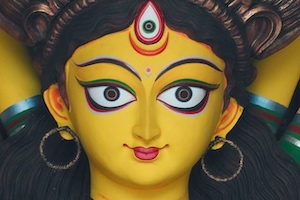Acupuncture bond with China
Telegraph | 28 February 2025The celebration was held in collaboration with the Embassy of the People's Republic of China and supported by the Dr Dwarakanath Kotnis Health Education Centre, Ludhiana.
“During the Sino-Japanese War from 1937 to 45, India sent a five-member medical mission to China to help Chinese soldiers. This mission, particularly through the involvement of Dr Bijoy Kumar Basu from Calcutta, played a crucial role in introducing acupuncture therapy to India when they returned,” said acupuncture therapist Chanchal Agarwal, who runs Healing Touch.
“Acupuncture involves the insertion of thin, sterile needles into specific points on the body. This restores the balance of energy and promotes natural healing by improving blood circulation and stimulating the nervous system. It is widely used for pain relief, stress management, and overall well-being,” said Agarwal, assuring that the needles being thin, most people feel little to no pain during insertion. The needles are typically left in place for 15 to 30 minutes.
Deputy consul general of China in Calcutta Qin Yong was happy to join the gathering. “I am glad that this ancient Chinese therapy is being practised and further developed by modern technicians for the benefit of people. It is a symbol of strong communication between India and China,” he said.
Qin said the Chinese government invited Basu to China twice to deepen his knowledge of acupuncture and that the death anniversary of another key figure in the mission, Dr Dwarkanath Kotnis, is commemorated every year in China. “The Dr Kotnis Memorial Committee in India and West Bengal also assist the needy in accessing affordable treatment,” he said.
Councillor Rajesh Chirimar remarked that Chinese culture, cuisine, and even medical treatments have become an integral part of our lives. "Due to our lifestyle and increasing longevity, we often suffer from various ailments and any alternative treatment that is both effective and affordable is welcome,” he said.
Patients shared their experiences too. “I was diagnosed with endometriosis three years ago but allopathic and homoeopathic medicines failed to help. The doctor suggested surgery, but I was scared of the procedure and turned to acupuncture. After 15 sessions my unbearable pain and low blood pressure gradually disappeared. I am much better now,” said Punam Bhandari, a lady in her 30s.
"One advantage of this therapy is that there is no need for frequent blood tests. Diagnosis can be made simply by checking the pulse and examining the face and ears. We treat patients not only from Calcutta but also from remote areas of Bengal, Mumbai, the Andaman and Nicobar Islands, and even Bangladesh," said Agarwal. They also offer training courses that range from six months to five years.
BA Block residents were recently treated to a Salil Chowdhury tribute by singers of the block, followed by a performance by Zee Bangla Sa Re Ga Ma Pa 2001 champion, Sujoy Bhowmick.
Baidyanath Koley, president of the residents' association, extended New Year greetings, secretary Arup Sinha urged everyone to contribute to the event’s success through active participation, and in his welcome address, Subrata Hor reflected on Chowdhury’s multifaceted legacy, which included poetry, stories, and plays performed by stalwarts like Utpal Dutt and Bijon Bhattacharya.
The first half opened with a bouquet of Chowdhury’s songs interwoven with narration, directed by Samarjit Guha, chairman of the cultural wing. Led by those like Jayati Bose and Jayeeta Paul and Soma Mitra, the recital opened with the choral rendition of Biswapita tumi hey prabhu from the 1977 film Sister. There were Puja hits, album songs and patriotic anthems O alor pathayatri and Ahoban shono ahoban.
A recorded voiceover of Chowdhury himself provided insight into his artistic influences: "I had the opportunity to learn and listen to various forms of music, which broadened my horizon. Growing up in Assam’s tea gardens, a miniature India where workers of diverse dialects lived, I absorbed their songs. My father, though a physician, was a music lover with a vast collection of western records, including Beethoven and Mozart, which shaped my perspective on music,” the recording said.
Guha’s rendition of Janeman, janeman in Hindi followed by a chorus of its Bengali version Prajapati prajapati received thunderous applause. "Though we regularly perform in the block, this was my first large-scale programme, and I received great feedback from residents and guest singers,” Guha shared. “I chose some lesser-known songs to keep the performance fresh and engaging.”
Pagol hawa ki amar by budding singer Udayan Deb left a lasting impact too. “I was anxious performing in my own block, but received encouragement from residents. I look forward to more such opportunities,” said the St. Xavier’s College student.
The second phase featured guest singer Payel Majumder and Sujoy Bhowmick. He sang Tomate amate dekha hoyechhilo, Tumi koto je dure as well as Kishore Kumar and Bappi Lahiri hits.
The crowd swayed with mobile torches as he sang Ayub Bachchu’s Sei tumi keno eto achena hole before concluding with Vande mataram, Suno gaur se duniya walo and the National Anthem.
Bharati Kanjilal
